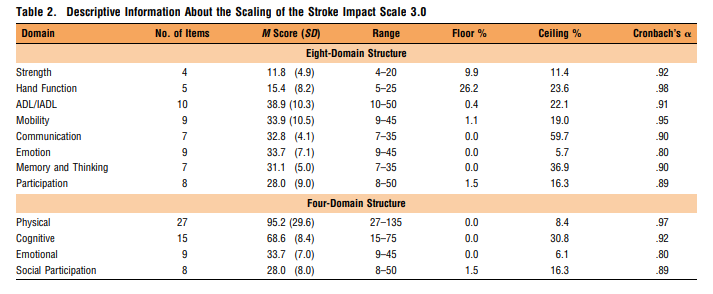Featured Scientist

Author published in"American Journal of Occupational Therapy" affiliate to
Chia-Yeh Chou
Department of Occupational Therapy,
Fu Jen Catholic University, New Taipei City, Taiwan
Article published in
"American Journal of Occupational Therapy" ,March/April 2021, Vol. 75, No. 2
Cross-Validation of the Factorial Validity of the Stroke Impact Scale 3.0 in Patients With Stroke
Importance: The Stroke Impact Scale 3.0 appears to be a promising outcome measure of health-related quality of life (HRQOL) for clients with stroke. However, because the factorial validity of the Stroke Impact Scale 3.0 remains unclear, its validity is limited.
Objective: To examine the underlying structure of the Stroke Impact Scale 3.0 by comparing the currently available eight- and four-domain structures simultaneously.
Design: Secondary data analysis of responses to the Stroke Impact Scale 3.0 from a previous psychometric validation study.
Setting: Five general hospitals in northern and southern Taiwan.
Participants: Two hundred sixty-three patients with stroke from rehabilitation wards (inpatients) and neurology and rehabilitation clinics (outpatients).
Outcomes and Measures: Confirmatory factor analysis was used to examine the eight- and four-domain structures of the Stroke Impact Scale 3.0. Four fit indices were considered simultaneously to examine the model fits of both structures.
Results: The eight- and four-domain structures of the Stroke Impact Scale 3.0 were not supported by all four indices (χ2/df = 2.7 and 5.0, comparative fit index = .79 and .86, root mean square error of approximation = .08 and .12, standardized root mean square residual = .08 and .08, respectively). The unidimensionality of each domain in the two structures was not supported.
Conclusions and Relevance: Neither the eight- nor the four-domain structure of the Stroke Impact Scale 3.0 was supported, suggesting that scores may not provide valid assessments of HRQOL in clients with stroke. Further modification and validation of the Stroke Impact Scale 3.0 are warranted.
What This Article Adds: Our findings suggest that the eight- and four-domain scores of the Stroke Impact Scale 3.0 may not be valid. Therefore, until more supporting evidence is developed, these scores should be interpreted cautiously in regard to clients’ HRQOL; alternatively, other measures could be used.
